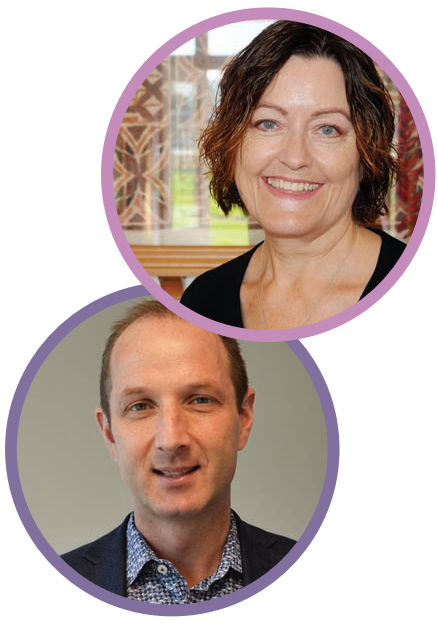
Kia ora from Karla and Paul
Haere mai, warm Pacific greetings, and welcome to this latest update on our Mental Health and Addiction Change Programme. In this edition we will focus on the Hutt Acute Inpatient Mental Health Unit workstream, which is one of four inter-connected projects.
As part of designing the unit, we have begun to develop the model of inpatient care that will best support the needs of our districts. The high-level model of care will be used to inform facility design and set us on a path with a shared vision that we can strive towards as the new facility progresses. The model of care will inform the way in which we deliver acute mental health services across the district, for both the Hutt and Wellington inpatient units.
As part of this work we have held three hui over the last two months, to identify and consider the values and principles for the acute adult inpatient service.
These have been attended by a wide range of stakeholders, including lived experience advisors who co-facilitated the sessions, as well as Māori, Pacific, Disability and community representatives. We want to express our sincere thanks to all of you who attended and shared your thoughts and ideas.
This is such a positive process to be part of and people’s energy and ideas have been inspiring.
Find out more about each of the workshops below, and don’t hesitate to contact mhachange@ccdhb.org.nz if you’d like to give feedback.
Ngā manaakitanga,
Karla Bergquist Paul Oxnam
Executive Director, MHAIDS Executive Clinical Director, MHAIDS
 Acute Inpatient Mental Health
Acute Inpatient Mental Health/word-cloud-moc.png)
Word cloud for workshop one: What values do we need to have to achieve our purpose?
Model of Care workshops
Te Whatu Ora describes a model of care as delivering best practice care by applying a set of principles across identified clinical streams and supporting pathways through care for people accessing services. These principles will be informed by a range of expertise including lived experience, Māori, Pacific, disability, and community services; together with the inpatient service.
To realise this, we invited a range of stakeholders from our community to participate in the series of workshops over a period of weeks, this ensured that we had a diverse set of voices working together to build the vision for the future.

The work highlighted the interconnectedness to the other parts of the change programme with stakeholders identifying areas for improvement not only within the model of care but within the other workstreams. We were lucky to have team members from the other workstreams present at the workshops so that these ideas could be fed into the respective areas.
We set ourselves the challenge to operationalise our vision and values to make sure they keep the communities we serve at their core. In the words of one workshop attendee, “People will forget what you do and say, but they won’t forget how you made them feel.”
The first hui focused on exploring
purpose, values, and principles for the new model of care. This gave groups of stakeholders an opportunity to talk through what the key principles should be, how these differ from current practice, and the experience we would like to offer future service users.
Review the workshop summary here.
 The second hui discussed giving life to contemporary model of care principles in relation to themes identified in the first hui:
The second hui discussed giving life to contemporary model of care principles in relation to themes identified in the first hui:
- Taking the least restrictive approach
- Multi-disciplinary practice
- Cultural safety and responsiveness
- Community connectedness
Safety for all
The workshop was run in a world café style and each of the themes were facilitated by a clinical and lived experience partnership. Group members were invited to consider how we would practice, and the environments we would need, to give life to these principles.
Review the workshop summary here.
The third hui focused on consumer journey mapping, using three fictional tangata whaiora to map out ideal future inpatient pathways. This offered the opportunity to identify areas of improvement in the care pathway from a tangata whaiora perspective, and look at the ideal vision for future of inpatient care. The groups challenged each other to think outside the box and suggest some ‘radical changes’ that we could aspire to. Review the workshop summary here.
Next steps
Work is now underway to take what people told us and develop a draft model of care document. Once this has been completed, we will send out this for consultation and feedback.
The model of care work sits alongside a wider piece of work that informs building design. The facility design project is led by CCM Architects, in partnership with Te Whatu Ora – health infrastructure and investment unit.
There will be three concept design user groups; facilities, support services and clinical services. Each of these groups will meet at least three times for each of the three design phases (preliminary, developed and detailed) between now and early next year. These groups will have input into the way the building will be configured and used. As this project progresses we will keep you updated.